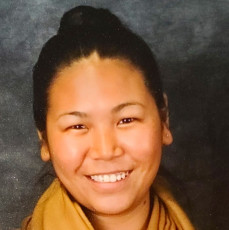As my journey of living in this beautiful country continues, I am learning more and more about how unique Zimbabwe is. Everyday there is something I learn that makes me go, “Oh, I see!” One very interesting thing I learned recently is; about Zimbabweans’ love for colors. In Zimbabwe, color matters, which is very apparent in everyday life, from their vibrant cultural attires to colorful product packaging at supermarkets.
I never thought I would write about colors, but here we are! When I learned through my WAP team what colors mean for soap production, I couldn’t help but write a short blog about it. So, in one of my initial meetings with WAP, I came to understand a recent challenge that they were facing in soap production. Some customers had recently commented about the discoloration of the soap. The dye used in the soap was separating from other chemicals when the temperature was too warm. To tackle this issue, I started learning more about soap production and how vital a dye is in making soaps. After understanding the production process and the ingredients used in soap, I realized that dye is not one of the essential elements in making soaps. In other words, you can make a dish soap without using dye.
With this realization, I was super excited to have the conversation about possibly leaving dye out of the soap process and producing soaps without it. I proposed that doing so would make our soap product even more appealing to customers as we are using fewer chemicals in the products. In addition, this solution will also cut the cost of production down as we will eliminate one raw material from the production. To my surprise, the response from the WAP team was totally different. When they heard my idea of leaving the dye out of soap, they all said, “No! We can’t do that. We need color.” This was when they started talking about the importance of color in Zimbabwe. WAP ambassadors mentioned that people love color in Zimbabwe. Colors symbolize quality, aesthetics, and appeal. When customers use soap with color, they think it’s a good quality soap and cleans the dishes properly. If there were no color, people would feel like the dish soap was not good enough for use or is spoiled. Therefore, the idea of taking the dye out of the soap process was not a viable one.
While we are still working on solving this issue of discoloring soap, tackling this issue has turned into an opportunity to learn more about Zimbabwean culture and reflect on the contrast between the U.S. and Zimbabwean markets. In the U.S., with changing generations, people are leaning more and more towards natural products and prefer cutting down on added chemicals and colors in products. These days, markets are filled with products that have tag words such as all-natural, chemical-free, 100% natural color, no color added, etc. People are often willing to pay more for products with such tag words. Whereas in Zimbabwe, customers are drawn toward products with vibrant colors and packagings. They care about the color of their products; whether natural or added, they must be vibrant and colorful. When you visit stores, you will hardly see products in darker colors, such as black or grey. Most market products have vibrant color packagings, usually in red, yellow, orange, and blue. As one of the WAP ambassadors said, “In Zimbabwe, colors matter from baby products to household essentials; if there is no color, it’s not good enough.”
Posted By Dawa Sherpa
Posted Jul 9th, 2022


2 Comments
Bobbi Fitzsimmons
July 9, 2022
Indeed, there is evidence of this “need for color” everywhere you turn in Zimbabwe. Each color seems to have a meaning as well. We have both learned something about this beautiful, vibrant culture. Thanks for explaining it so well, Dawa.
Iain Guest
July 12, 2022
Love this blog! I agree with Bobbi – you’ve explained it very nicely and given us something to think about. Who would have thought we’d think so differently about color, but of course it’s a no-brainer. Africa is famous for its colors. (isn’t it the same in your home country Nepal? Visitors are stunned by your festival colors!!) The one thing lacking is some colorful photos and an illustration – maybe contrast the WAP soap with others?